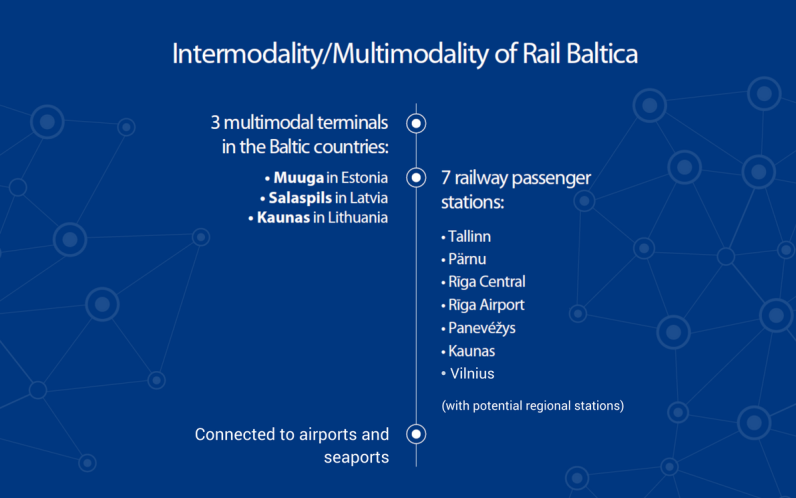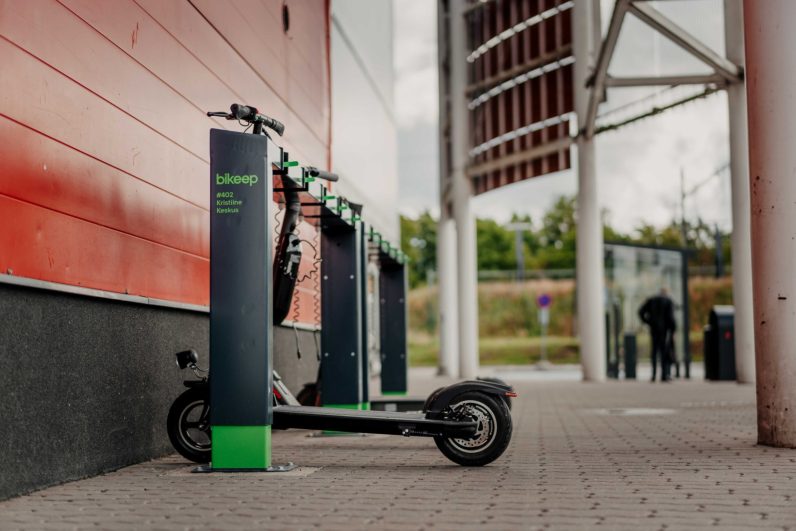Rail Baltica aims to integrate the Baltic States within the European rail network. It’s one of Europe’s most substantial investments to improve mobility and travel options, and it’s the largest Baltic-region infrastructure project in the last 100 years. The project includes five European Union countries — Poland, Lithuania, Latvia, Estonia and, indirectly, Finland. It will connect Helsinki, Tallinn, Pärnu, Riga, Panevežys, Kaunas, Vilnius, and Warsaw. But it’s more than the construction of a railway — it’s a platform for connectivity that offers vast economic growth, cross-border innovation, digitalisation, and community development possibilities. Rail Baltica brings countries together by building missing cross-border connections. Over a 10-year construction period, the project will take in 870 km of rail lines, and includes the building of seven intentional passenger stations and three freight stations.
Building a sustainable future of transport
What’s also significant is that the project is sustainable. Electric trains will run at speeds of 249 km/h (passengers), 120 km/h (freight). Unfortunately though, there are no maglev trains here, which typically top 400km/ph. But something is better than nothing. Still, maybe in the future, there’ll be potential to retrofit Polish company Nevomo’s hyperloop-inspired MagRail technology. It avoids protected environmental areas and includes noise protection barriers and special animal passages. And it’s not just cross-border trains. A commitment to multimodal mobility is embedded in the Rail Baltica project. It includes railway, state and municipal buses, private vehicles and electric vehicles, escooters, and ebicycles, that will connect regionally. This is a huge opportunity for mobile startups. As well as highly successful Bolt (Estonia), these include etricycle makers Ako Trike (Lithuania), and Estonia’s Auve Tech (Estonia), who make autonomous shuttles. Also relevant are Bikeep (Estonia), builders of micromobility parking stations and lockers, and sharing platform software makers like Atom Mobility (Latvia). But despite the project’s potential, its location alone creates a suite of challenges.
The challenge of rail transformation
Transforming Baltic rail doesn’t come cheap, with total costs estimated to be €5.8 billion, with 85% of the cost financed by the European Union, with the remainder covered by Latvia, Estonia and Lithuania. Furthermore, the war in Ukraine has increased not only the cost of fuel, but other construction materials. On top of this, goods planned to be sourced from Russia and Belarus cannot be obtained due to sanctions, requiring more expensive imports from other countries.
An important project during wartime
Rail transport has always been an important resource for countries like Ukraine, and current geopolitical conditions have increased the strategic significance of the Rail Baltica project both in terms of imports and exports as materials shortages can cripple national economies. Rail Baltica will contribute to the security of the Baltic States by establishing railway connectivity with their allies in Europe and improving military logistics in the entire region. In August, the EU granted the Latvian government EU funding for the first time to purposely develop transport infrastructure to serve both civil and military needs. Latvian Vice-President Dr Roberts Zīle shared that military mobility allocation “is no longer discreetly glossed over, as in the past.” Cargo rail will be critical in aiding the transport of military goods and materials securely and at speed. Transport Minister Tālis Linkaits sees reliable connectivity with western Europe as critical “to increase our country’s defence capabilities.” Construction of Rail Baltica is poised to start from 2026 to 2030. This project will be beset by challenges, but the benefits it will bring in the long term will be plentiful. For startups, businesses, and people, it’s going to make Europe a smaller, more connected place — and that’s going to change the continent for the better.


